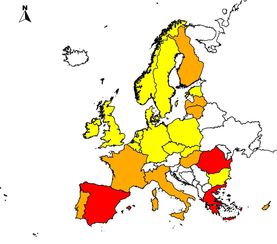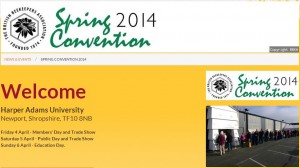Blog – bees, beekeeping & other sticky subjects
Meet Vita this spring
Firstly at Stoneleigh in Warwickshire on 1 March
and then at the BBKA Spring Convention in Shropshire 4-5 April.
Vita Photo Gallery expands to more than 650 photos
Thanks to Vita Photo Competition entrants, more than 100 new photos have been added to the Vita Photo Gallery bringing the total available for free download for your beekeeping presentations to 656!
It’s free to use for approved purposes:
Photos and images may be downloaded free of charge on condition that they are used only for educational purposes and not for commercial gain or published in any form (including web and newsletter publication). If you have any queries about usage, please contact .
But keep sending them in please! We would especially like photos of beekeeping management. They are usually very difficult to photograph, but very popular with our users.
Lots of people use the resource to learn more about beekeeping. How do you use the Vita Gallery? What would you like to see included? Please tell us!
Tanging doesn’t do it
You could almost hear the groan of disappointment as beekeepers read the latest research on tanging — it doesn’t work!
Tanging is a traditional, if eccentric, way of attracting swarms. The idea is that if you bang pots and pans or other suitably noisy instruments together as a swarm emerges, it will settle quickly and can then be re-hived instead of flying off into the great unknown. Tanging also has the benefit of alerting (and almost certainly annoying) the neighbourhood when a swarm has taken to the air.
Alas, Michael L Smith in the December 2013 issue of IBRA’s Journal of Apicultural Research has trashed the notion in a small study of swarms. He says tanging has no effect.
Beekeepers are distraught! As someone on the Bee_L discussion board noted: “Such noisy antics help us beekeepers to maintain our image of eccentricity”.
But perhaps a little more research is needed, given that some Vita research with its swarm lure has indicated that prime and secondary swarms behave in a different fashion.
There could be hope for tanging yet! Meantime, we suggest that you try Vita swarm lures.
Test Yourself: Beekeeping in the European Union
 Insight into European beekeeping is presented in a fascinating article by Marie-Pierre Chauzat et al in PLOS ONE, the highly respected biology publication. A few questions and answers should show why it’s such a good read:
Insight into European beekeeping is presented in a fascinating article by Marie-Pierre Chauzat et al in PLOS ONE, the highly respected biology publication. A few questions and answers should show why it’s such a good read:
Which EU country has most colonies?
Spain: almost 2.5 million.
Which EU country has the highest percentage of professional beekeepers?
Kosova: 88%
Which country has the highest yielding colonies?
Finland: 4 tons per 100 colonies
Which country gets most honey for its size?
Hungary: 20 tons per 100km square
Which country exports most honey?
Germany: 20,000 tons per year
Which country imports most honey?
Germany: 90,000 tons per year
Which country produces most Royal Jelly?
France: 7000 kg
Which country produces most queens?
Italy: 350,000
American Foulbrood
Lots more statistics in the PlOS ONE article, Demographics of the European Apicultural Industry.
No longer under close observation
In the end I decided not to attempt to overwinter the bees in the observation hive and they were moved to a nucleus in an out-apiary to see out the winter without prying eyes — assuming the mice don’t try to get in of course.
It is a very small colony, so I’m not sure how they will fare.
And with hundreds of workers gone from the office, there will inevitably be a drop in productivity … How will I ever cope?
First of all I will have to clean out the hive ready for another colony of bees next spring.
You can see a summary of the story of the observation hive in December’s BeeCraft magazine.
Turlough, Vita’s Guest Beekeeper Blogger





